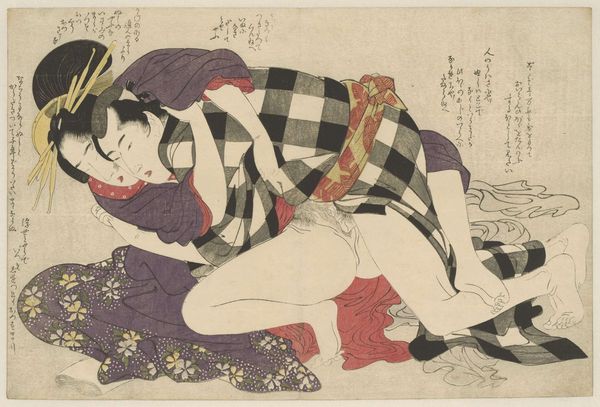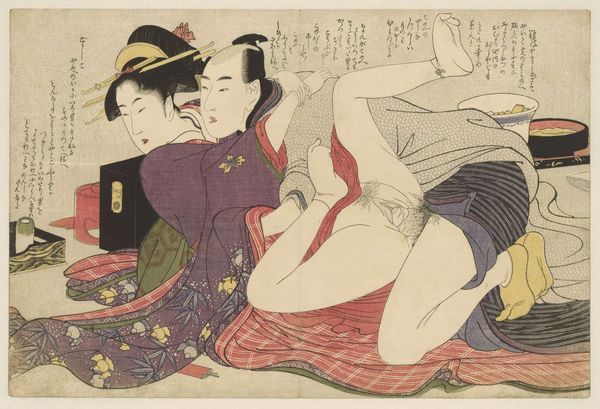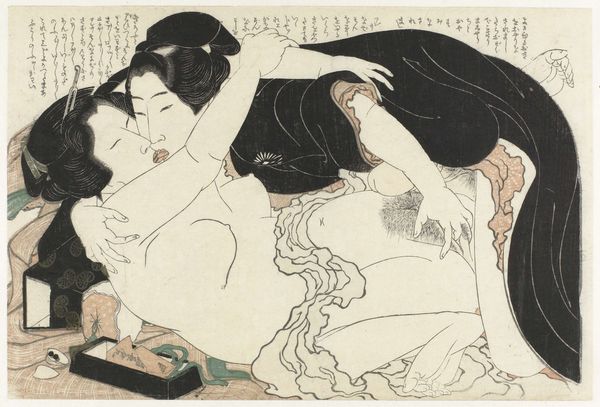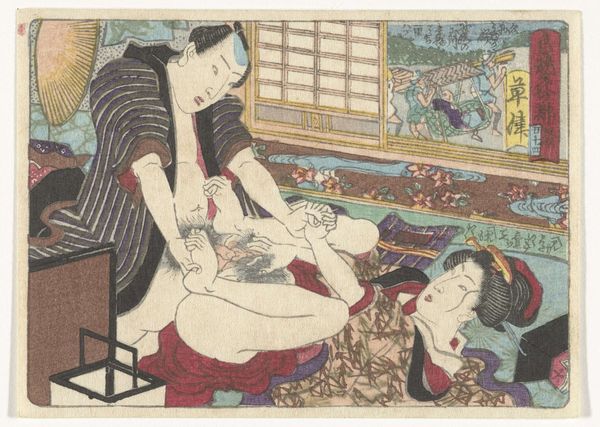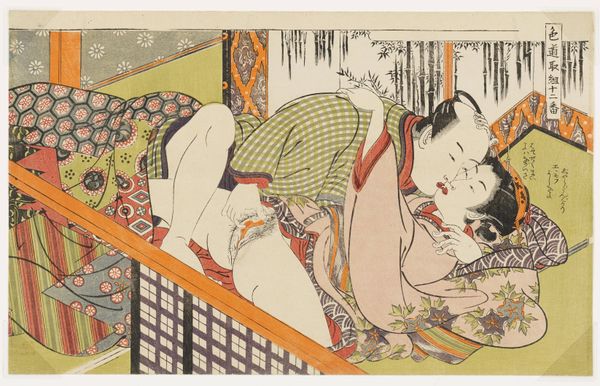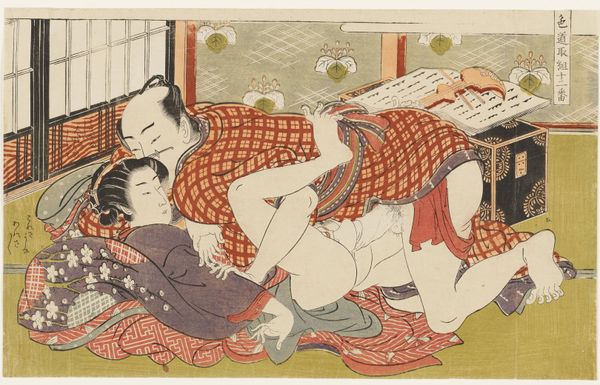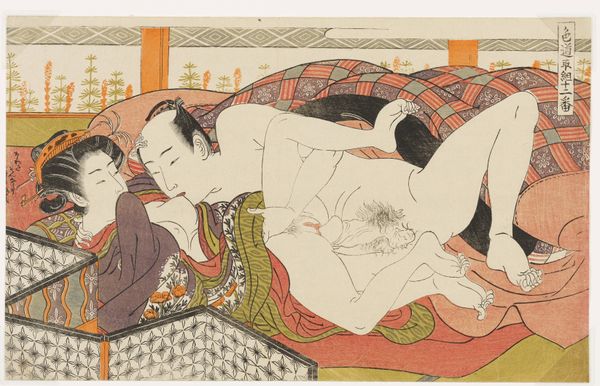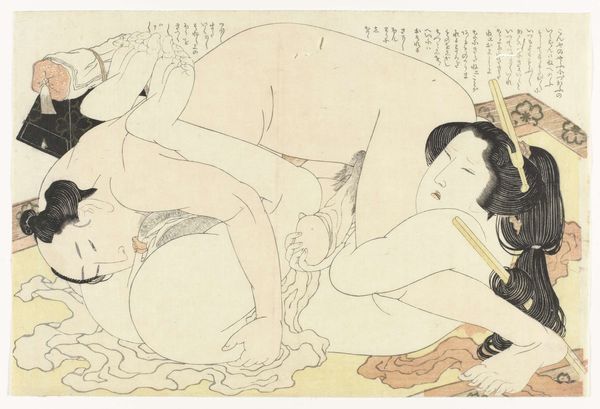
#
portrait
# print
#
ukiyo-e
#
figuration
#
watercolour illustration
#
erotic-art
Dimensions: height 257 mm, width 381 mm
Copyright: Rijks Museum: Open Domain
Editor: So, this is "In de buitenlucht," a print by Katsushika Hokusai, dating from 1815-1823. It’s part of the Rijksmuseum collection. It definitely grabs your attention, a bold composition, but… I’m not entirely sure what to make of it. How do you interpret this work? Curator: Well, this ukiyo-e print challenges the viewer, doesn't it? We're immediately confronted with power dynamics, the gaze. The woman's passivity contrasts sharply with the man's action. It prompts questions about female agency and the construction of desire within the historical context of Edo-period Japan. Who benefits from these representations, and whose stories are silenced? Editor: I hadn't thought about it in terms of power dynamics. It felt… intimate, but I see what you mean. Is this a typical representation of women at the time? Curator: That's a crucial question. While ukiyo-e prints often depicted idealized women, often courtesans, this particular image leans into eroticism, but through a lens that demands we consider gender roles and social expectations. Think about how the male figure controls the scene, visually and physically. This control underscores the patriarchal structure prevalent in that society. Is the female figure really "in de buitenlucht", or exposed, vulnerabilised? Editor: So, you're suggesting it’s a commentary on the objectification of women in that era? Curator: It's not a straightforward endorsement or condemnation. Rather, the work operates as a mirror reflecting existing social relations. Our job, as viewers, is to critically engage with those reflections, considering the intersections of gender, class, and power. Does that resonate with you? Editor: It does now. It’s fascinating to consider how something seemingly simple, like a print, can reveal so much about social and political realities. Curator: Exactly. And remember, art is rarely neutral. It actively participates in shaping our understanding of the world, and vice versa. The conversations we have with art objects, especially from the past, are also conversations with ourselves. Editor: This has definitely opened my eyes to a more critical way of viewing art. Thanks!
Comments
No comments
Be the first to comment and join the conversation on the ultimate creative platform.


